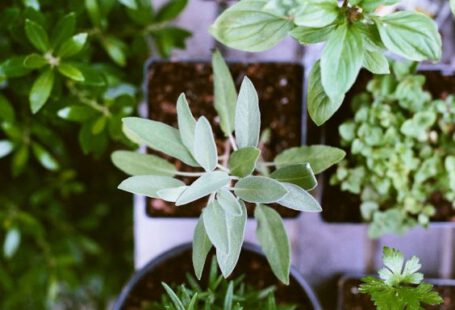Houseplants bring life and beauty to any indoor space, but sometimes we find ourselves wanting more of them. Whether it’s to expand our plant collection or to share with friends and family, propagating houseplants is an excellent way to grow new plants from existing ones. In this article, we will explore the best methods for propagating houseplants, so you can enjoy the satisfaction of watching your green family grow.
Leaf Cuttings: Simple and Effective
One of the easiest and most common methods of propagating houseplants is through leaf cuttings. This method works well for plants with thick, fleshy leaves, such as succulents and many tropical plants. To propagate using leaf cuttings, simply select a healthy leaf from the parent plant and carefully cut it off. Allow the cutting to dry for a day or two, then place it in a well-draining potting mix. Keep the soil slightly moist and provide indirect light. Over time, roots will begin to form, and a new plant will emerge.
Stem Cuttings: Versatile and Reliable
Stem cuttings are another popular method for propagating houseplants, and they work well for a wide range of plants. To propagate using stem cuttings, start by selecting a healthy stem from the parent plant. Using a sharp, clean knife or pair of scissors, cut the stem just below a node, which is where leaves or buds emerge. Remove any lower leaves, leaving only a few at the top. Place the cutting in a container with water or a well-draining potting mix, ensuring that at least one node is submerged or in contact with the soil. Keep the soil moist and provide bright, indirect light. With time and proper care, roots will develop, and a new plant will grow.
Division: Ideal for Clumping Plants
Some houseplants, such as spider plants and peace lilies, naturally form clumps with multiple stems. Propagating these plants through division is an excellent way to create new specimens. To divide a clumping houseplant, carefully remove it from its pot and gently separate the roots into smaller sections. Each section should have its own stems and roots. Plant each division in a separate pot with fresh potting mix, and water thoroughly. Place the new plants in a bright location, but avoid direct sunlight until they are established. With regular care, each division will grow into a thriving plant.
Air Layering: Perfect for Difficult-to-Root Plants
Some houseplants can be challenging to propagate using traditional methods. Air layering is a technique that allows you to create new plants from these hard-to-root specimens. To air layer a houseplant, choose a healthy stem and make a small incision just below a node. Apply a rooting hormone to the wound, then wrap it in moist sphagnum moss or a similar material. Cover the moss with plastic wrap or a plastic bag to retain moisture. Over time, roots will develop within the moss, and you can cut the stem below the air layer and pot it up as a new plant.
In conclusion, propagating houseplants is an exciting and rewarding way to expand your collection and share the joy of gardening with others. Whether you choose leaf cuttings, stem cuttings, division, or air layering, each method has its advantages and is suited to different types of plants. So go ahead, give it a try, and watch as your houseplant family grows and flourishes.





